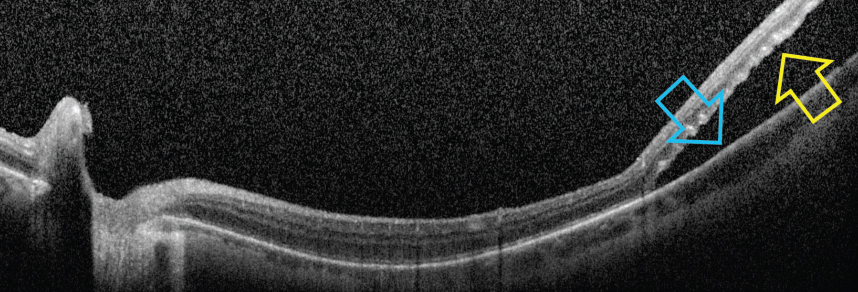 |
|
This study observed that sex and laterality influence the phenotype of RRD in various ways. Photo: Mohammad Rafieetary, OD. Click image to enlarge. |
Various risk factors have been identified for rhegmatogenous retinal detachment (RRD), including myopia, age, fellow eye status, cataract surgery, family history and Caucasian or Asian ethnicity. However, the effect of specific patient characteristics, such as sex and laterality, on clinical features of RRD has not been sufficiently studied. This knowledge gap recently led investigators to perform a retrospective analysis, which confirmed the predominance of male sex and right laterality in RRD. The data also revealed several clinical features of RRD associated with both sex and laterality.
Patients included in the analysis were at least 16 years old and had undergone primary RRD repair during a seven-year period (n=8,133 eyes, 53.4% of which were right). The mean age of patients at the time of surgery was 59.
The researchers noted in their paper, published in Eye, that “the overall male predominance (63.7%) was more marked in the age range 50 to 69 years.” They also reported that men were more commonly pseudophakic and presented more often with baseline posterior vitreous detachment. Additionally, male sex was associated with frequent foveal involvement, greater RRD extent, a higher incidence of retinal tears and larger-sized retinal tears including dialysis and giant retinal tears.
On the other hand, female sex was significantly associated with baseline myopia, retinal holes as causative retinal break and isolated inferior retinal detachment.
Regarding laterality, clinical features of RRD that were more common in right eyes included foveal involvement, larger retinal breaks, isolated temporal retinal detachment and temporal retinal breaks. Left eyes tended to be more myopic at baseline and presented more frequently with isolated nasal retinal detachment and nasal retinal break. The researchers also pointed out that as with sex, the predominance of right eyes was most pronounced in patients 50 to 70 years old.
Based on their analysis, the team concluded in their paper that sex and, to a lesser extent, laterality “were associated with multiple presenting features of RRD including extent, break distribution, number, size and type, as well as retinal detachment distribution.”
Ferrara M, Song A, Al-Zubaidy M, et al. The effect of sex and laterality on the phenotype of primary rhegmatogenous retinal detachment. Eye. February 27, 2023. [Epub ahead of print]. |


